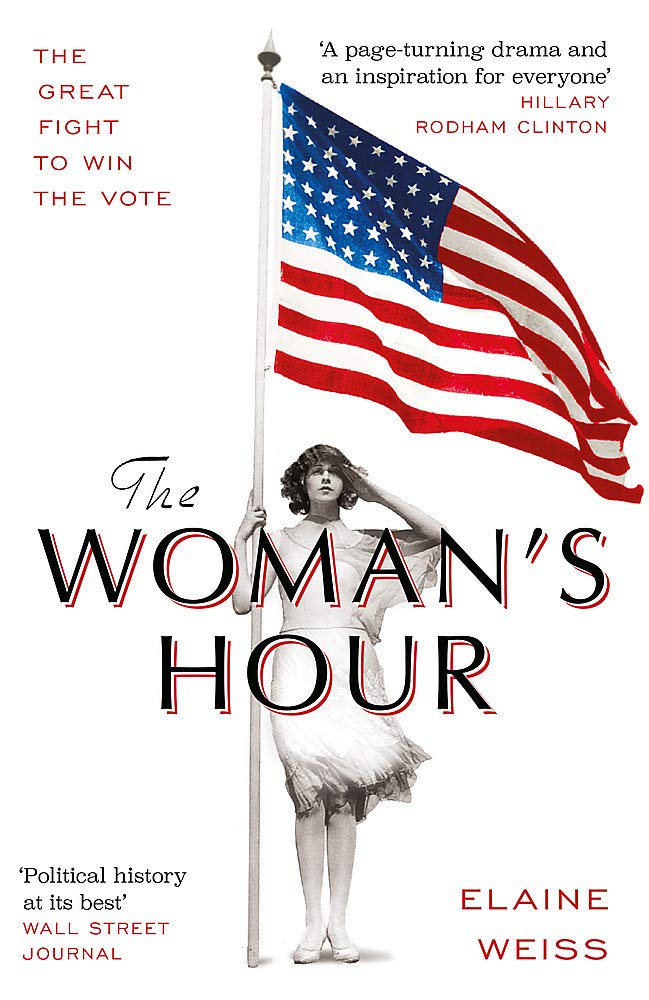
“The right of citizens of the United States to vote shall not be denied or abridged by the United States or by any State on account of sex.” -Amendment XIX
Today marks the 100th anniversary of the women’s right to vote! On this day in 1920, the 19th Amendment was ratified, guaranteeing the right of women to vote in the United States. While the passing of this amendment by no means ended the struggle for equality, it nonetheless was and is a milestone in the history of women’s rights and American democracy. To celebrate, the library has put together a short reading list of books about the struggle for the women’s vote in America.
Click here for official Women’s Vote Centennial Commission website to learn more.
Click here for the New York Times’ Suffrage at 100: A Visual History.
(With your FTPL card, you have free access to the New York Times! Click here to find out how to sign up.)
“Here is the story of leader Alice Paul, from the women’s suffrage movement—the long struggle for votes for women—to the “second wave,” when women demanded full equality with men. Paul made a significant impact on both. She reignited the sleepy suffrage moment with dramatic demonstrations and provocative banners. After women won the right to vote in 1920, Paul wrote the Equal Rights Amendment (ERA), which would make all the laws that discriminated against women unconstitutional. Passage of the ERA became the rallying cry of a new movement of young women in the 1960s and ’70s. Paul saw another chance to advance women’s rights when the landmark Civil Rights Act of 1964 began moving through Congress. She set in motion the “sex amendment,” which remains a crucial legal tool for helping women fight discrimination in the workplace. Includes archival images, author’s note, bibliography, and source notes.” -Goodreads.com
“Mr. President, How Long Must We Wait? weaves together two storylines: the trajectories of Alice Paul and Woodrow Wilson, two apparent opposites. Paul’s procession of suffragists resulted in her being granted a face-to-face meeting with President Wilson, one that would lead to many meetings and much discussion, but little progress for women. With no equality in sight and patience wearing thin, Paul organized the first group to ever picket in front of the White House lawn—night and day, through sweltering summer mornings and frigid fall nights.
From solitary confinement, hunger strikes, and the psychiatric ward to ever more determined activism, Mr. President,How Long Must We Wait? reveals the courageous, near-death journey it took, spearheaded in no small part by Alice Paul’s leadership, to grant women the right to vote in America.” -Goodreads.com
“Cooney’s thickly illustrated history explores the 70-year effort of American women to gain the right to vote. Largely image-driven, the reference is based on research Cooney carried out in manuscript collections, subject files, and photo collections at 100 public and private repositories including the Library of Congress, the Schlesinger Library at Radcliffe, and the Huntington and Bancroft libraries.” -Goodreads.com
“An award-winning author chronicles the story of the women’s suffrage movement in America, using compelling period photographs–including some never before published–to illustrate the vivid narrative.” -Goodreads.com

“Nashville, August 1920. Thirty-five states have ratified the Nineteenth Amendment, twelve have rejected or refused to vote, and one last state is needed. It all comes down to Tennessee, the moment of truth for the suffragists, after a seven-decade crusade. The opposing forces include politicians with careers at stake, liquor companies, railroad magnates, and a lot of racists who don’t want black women voting. And then there are the ‘Antis’–women who oppose their own enfranchisement, fearing suffrage will bring about the moral collapse of the nation. They all converge in a boiling hot summer for a vicious face-off replete with dirty tricks, betrayals and bribes, bigotry, Jack Daniel’s, and the Bible.
Following a handful of remarkable women who led their respective forces into battle, along with appearances by Woodrow Wilson, Warren Harding, Frederick Douglass, and Eleanor Roosevelt, The Woman’s Hour is an inspiring story of activists winning their own freedom in one of the last campaigns forged in the shadow of the Civil War, and the beginning of the great twentieth-century battles for civil rights.” -Goodreads.com
Thanks for reading!
-George, FTPL









